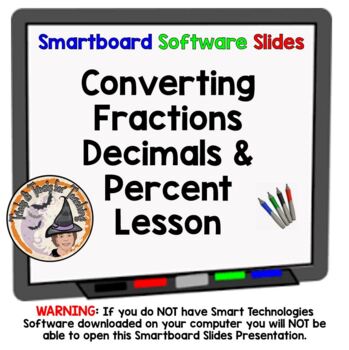Converting Fractions Decimals Percents Smartboard Lesson FDP Conversions
- NOTEBOOK (SMARTboard) File
Description
Math Teachers ~ You'll LOVE this Convert-Fractions-Decimals-Percents Smartboard-Slides-Lesson that has plenty of interactive practice for students to come up to your smartboard to participate. Tables are included as well. You get 31 slides total, complete lesson. LOTS of slides, lots of choices for your lesson, all editable. You'll love this smartboard lesson and use it year after year!
WARNING:
You MUST have SMART Technologies SMART software, and a SMARTBOARD to teach from, to effectively download, open and use this Interactive Smartboard Lesson. Go to https://legacy.smarttech.com/en/products/education-software/smart-learning-suite/download/trial to download a free trial.
Be sure to L@@K at my other 1,285+ TERRIFIC teaching resources!
~ ~ THANK YOU KINDLY ~ ~





